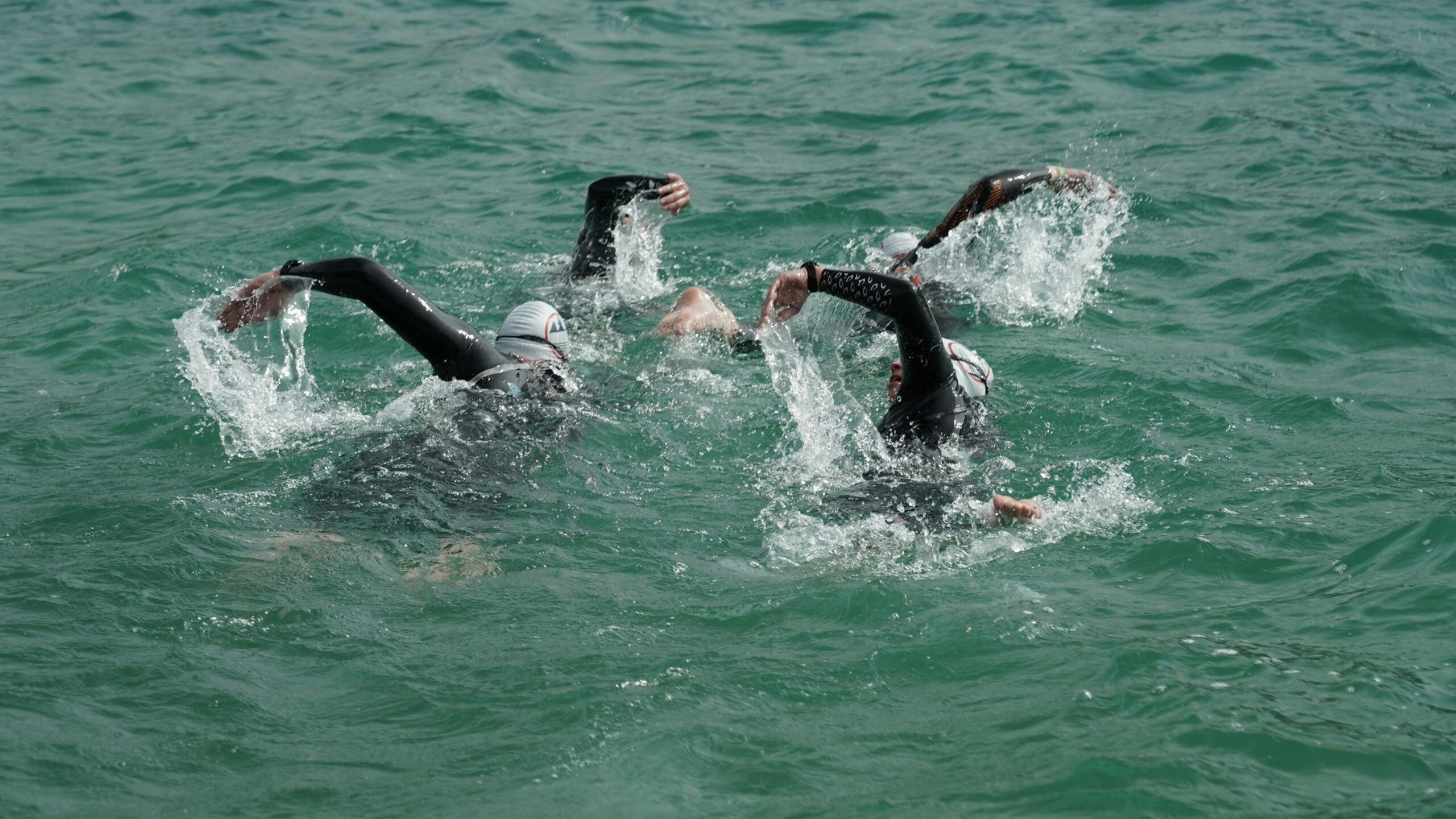Image description: wild swimmers doing front crawl in a body of water. Photo by Johanna Steppan on Unsplash
A new report from the London assembly has recommended ten new wild swimming locations should be created in London, to accelerate a clean-up of the capital’s waterways and increase nature access.
The investigation, titled “Swimmable rivers: Towards clean and healthy waterways in London” was carried out by the assembly’s environment committee in 2024-25, when the new Green party leader Zack Polanski was chair.
While there are now eight locations in London designated as safe places to swim in nature, none of the sites are on rivers. All are in docks or ponds and none of the city’s rivers currently achieve “good” status in the Environment Agency’s official testing, based on the EU’s water framework directive.
Key recommendations for tackling water pollution
The report advises the London mayor should aim to designate four new sites as bathing waters by 2028 and a further six by 2034. It recommends geographically distributing the sites across the capital where possible, beginning with river locations that are already used for recreation. The river at Teddington in south-west London was highlighted a notable location that is already used for swimming.
The report further suggested the mayor should have a role on the board of Thames Water to hold the company accountable in cleaning up the water. It also calls for clear advice on water safety for all of London’s rivers and water sites by April 2026, with a “one-stop shop” page on the Greater London authority’s website to link to all key information. It says this should be accompanied by regular, high-profile water safety campaigns and the promotion of safe, supervised locations to swim.
Precedent already exists
The committee believe London mayor, Sadiq Khan, should tackle water pollution like he did air pollution. Khan has focused on breathable air and put in place an ultra-low emission zone (Ulez) scheme, introducing a ban on the most polluting vehicles from London.
As a result, a study has estimated that roadside nitrogen dioxide emissions are 27% lower overall than they would have been without the scheme, and small-particle emissions from vehicle exhausts were 31% lower in outer London in 2024 than they would have been had Ulez not been expanded in 2023.
Additionally, London can follow in the footsteps of other cities are cleaning up their rivers for swimming: Paris has opened a swimming site in the Seine in the city centre and Chicago is running its first river swim in almost a century.
